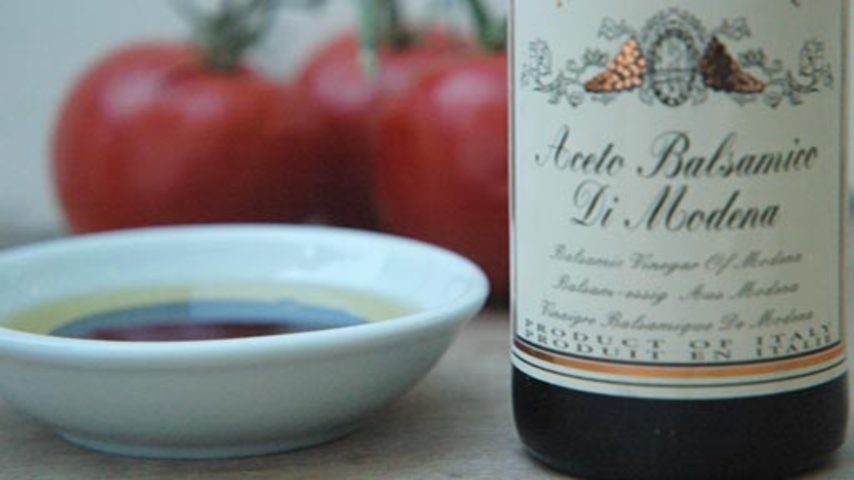Tips & Techniques > How to Choose Balsamic Vinegar

Buying balsamic vinegar is very similar to buying wine. The origin, quality of grapes, years of aging and how it was aged are all important factors which will determine the quality of the balsamic vinegar.
True balsamic vinegar Aceto Balsamico Tradizionale (Traditional Balsamic Vinegar) is made by boiling white grapes (typically Trebbiano grapes) until they are reduced by about one third of their original volume. This concentrated grape mix is called grape “must”. This must is then fermented in a series of wood barrels. The concentrated must is then stored in a sequence of progressively smaller barrels made of different woods, which ferments and concentrates the flavors over many years. The must will reduce by approximately 10% each year through evaporation, becoming progressively more concentrated and complex. The dark color comes from the mixture coming into contact with the wood barrels.
Authentic, traditional balsamic vinegar has to be made from grapes that are grown in the Emilian-Romagna and Modena regions of Italy. By Italian law the vinegar must ferment for a minimum of 12 years in order to be allowed to be sold as “Balsamico Tradizionale”. The older (some are aged over 150 years), the better, but also much more expensive.
High-quality balsamic vinegars labelled as Aceto Balsamico Tradizionale di Modena (Traditional Balsamic Vinegar of Modena) or Aceto Balsamico Tradizionale di Reggio Emilia (Traditional Balsamic Vinegar of Emilia) indicates it has been produced using traditional methods, as mentioned above. These traditional vinegars often come in a specially-shaped bottle which usually indicate that is has been extra-aged and is accepted by the Italian consortium — often designated DOC or Denominazione di orgine controllata numbered and sealed with a Seal of Guarantee. However, excellent producers bottle and sell their balsamic without the consortium’s label. The minimum indicator in the ingredients on a quality bottle of balsamic is grape must.
Cheaper, mass-produced ‘balsamic’ vinegar, often labelled as Balsamic Vinegar of Modena (Aceto Balsamico di Modena) is an inexpensive modern imitation of the traditional product. Imitation balsamic is often made with just wine vinegar, as opposed to grape must. There are also many non-traditional balsamic vinegars that are a blend of red wine vinegar and the must from a traditional balsamic vinegar. It may be aged but most times is not. Because these non-traditional vinegars are often stored in stainless-steel vats and there is generally no aging involved, they lack complexity and character. In an attempt to add flavor and complexity, this cheaper vinegar is mixed with additional coloring, caramel and sometimes thickeners like guar gum or cornflour — all in an attempt to artificially simulate the sweetness and thickness of the aged Aceto Balsamico Tradizionale di Modena. These imitation products are often sold at what appears to be bargain prices for balsamic vinegar, but they can also be priced ridiculously for simply sweetened, cheap wine vinegar.
When determining which balsamic vinegar to purchase, look for these indicators in the list of ingredients or on the bottle. These are listed in order of highest-quality/price to lowest.
Grape must, Tradizionale
Age should be minimum 12 years. This vinegar will be thick and have complex and sweet flavors. It is used as a finishing condiment — served with cheese or fruit, in desserts and as a special seasoning for steak and fish.
Grape must, vinegar
Age unknown. This vinegar has complex and medium-sweet flavors. It is used as a finishing condiment.
Grape must, vinegar, caramel
Little or no aging. This vinegar will be thin with a sweet-and-sour flavor. This is an all purpose vinegar.
Vinegar, caramel, artificial flavors
Little or no aging. This vinegar will be sour and thin. It is primarily used for deglazing or reducing down to make a balsamic reduction.
Depending on the brand, there are many variations when it comes to labeling, just keep in mind the order in which the ingredients are listed — if “must” is first, this is a good start.